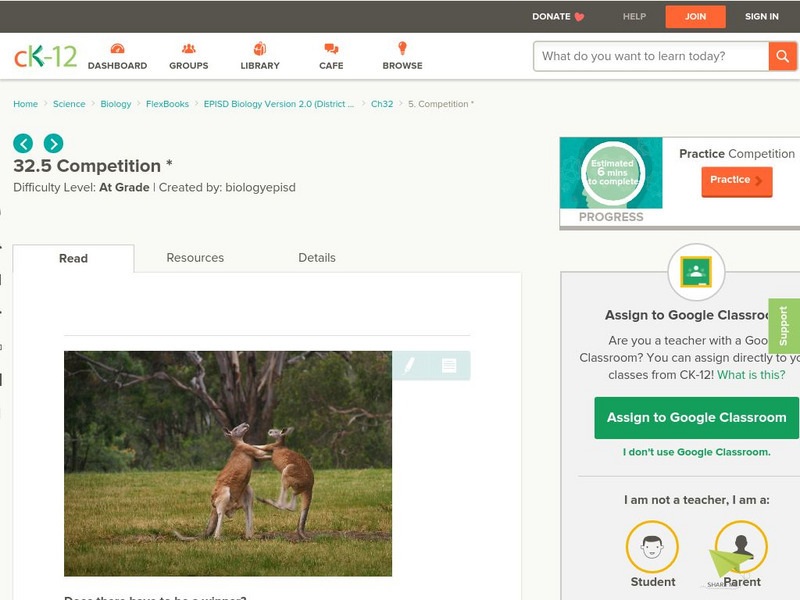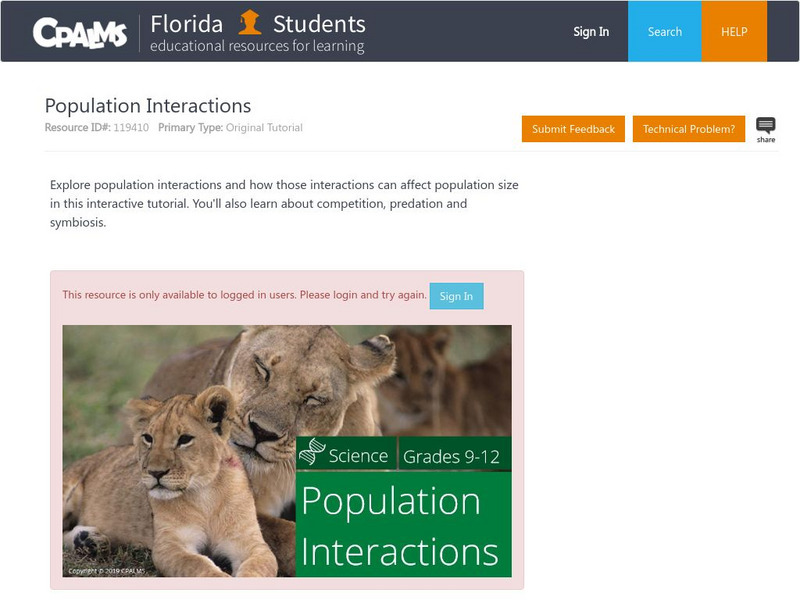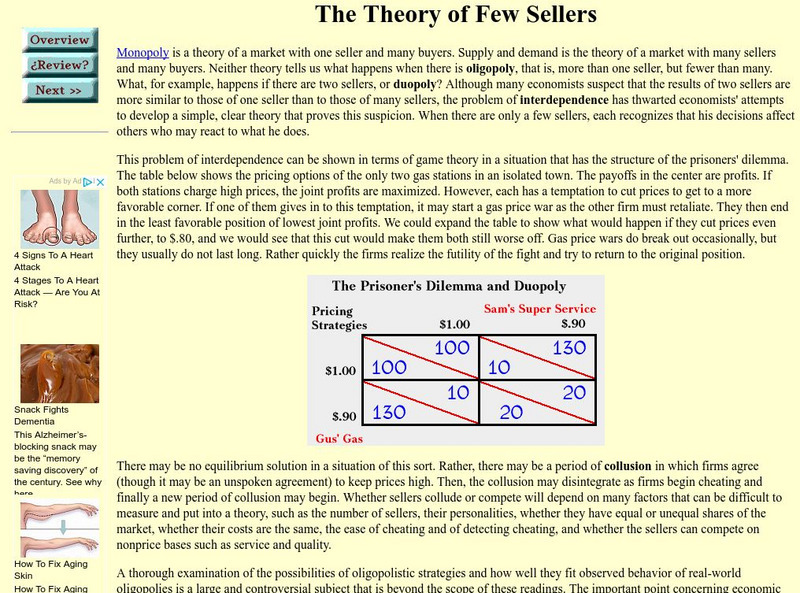Google
Google Science Fair
Google's own version of the Science Fair is a global online science and technology competition open to individuals and teams from ages 13 to 18.
Robert Schenk, PhD
Cyber Economics: Monopolistic Competition
E-learning site uses an example of "pushcarts on the beach" to demonstrate a monopolistically competitive market structure and how, as more firms enter the market, price, quantity, and deadweight loss are all affected.
PBS
Pbs Frontline: The Columbian Cartels
This article describes some of the world's most well-known cartels, the Columbian drug cartels.
US Department of Justice
Us Department of Justice: Antitrust Enforcement and the Consumer [Pdf]
This article outlines how the Antitrust Division of the Department Of Justice works for and protects the typical American consumer.
CK-12 Foundation
Ck 12: Episd: Competition
[Free Registration/Login may be required to access all resource tools.] In this module students will study competition in the sense of organisms competing for the same space, food, or water for survival. Understand how interspecific...
Other
Bea: The Broadcast Education Association
Established in 1955, the Broadcast Education Association (BEA) has expanded its scope to include all aspects of telecommunications and electronic media. Their nicely designed home page gives a good overview of covered topics.
Curated OER
Kids Health: Sibling Rivalry
"Sibling rivalry is totally normal. Rivalry means competition, and you probably know that siblings are your brothers and sisters. So put themtogether and sibling rivalry is competition between brothers and sisters! Read about rivalry and...
NC State University
North Carolina State University: Symbiotic Relationships
Includes a description of symbiosis in general, then lists and defines types of symbiosis including mutualism, commensalism, parasitism, competition, and neutralism. Includes a chart which summarizes the different types of relationships....
Annenberg Foundation
Annenberg Learner: The Habitable Planet: Ecology Lab
Create the parameters of your own ecosystem by choosing which producers and consumers live there. Visualize how the food web operates and species populations change. This simulator mimics the food web within a typical ecosystem and gives...
Massachusetts Institute of Technology
Mit: Open Course Ware: Courses: Civil Environmental: Ecology I: The Earth System
College-level online course highlighting the fundamentals of ecology. Course topics include coevolution of the biosphere, geosphere, atmosphere, and hydrosphere; photosynthesis and respiration; and the carbon, nitrogen, and water cycles....
Untamed Science
Untamed Science: Competition
This well-written article explains what competition in an ecosystem is and the different ways it can manifest itself. It also looks at how organisms avoid competition, some disadvantages and outcomes of competition, the impact of a...
Texas Education Agency
Texas Gateway: Symbiosis
Given scenarios or illustrations, the student will determine the nature and type of relationship between organisms, including parasitism, commensalism, mutualism, and competition.
Able Media
Able Media Llc: The Ancient Olympics
A series of articles and historical information about the history, origins, and events of the ancient Olympics.
CPALMS
Florida State University Cpalms: Florida Students: Population Interactions
In this tutorial, students will study populations learning about how interactions can affect size. Tutorial explores competition, predation, and symbiosis.
Federal Trade Commission
Federal Trade Commission: Competition Counts
A PDF that explains the need for competition in the marketplace and how the FTC protects it.
Concord Consortium
Concord Consortium: Stem Resources: The Virtual Ecosystem
What does competition for food do to a population? Experience what happens to a rabbit population with limited resources in this virtual ecosystem. At the end of the exercise, there are questions relating to concepts reviewed.
Auburn University
Auburn University: Glossary of Political Economy Terms: Competition Defined
This Auburn University site is a very good explanation of competition, including hyperlinks to related topics such as monopoly and substitute goods.
Robert Schenk, PhD
Cyber Economics: The Theory of Few Sellers
An overview of monopoly, oligopoly and duopoly, focusing on the interdependence of firms in an oligopoly, shown through the use of a game tree how these firms are tempted towards the practice of collusion.
NC State University
Nc State University: Population Dynamics
Students will understand the ecological concepts behind population dynamics of wildlife species.
Wikimedia
Wikipedia: Cartel
This on-line encyclopedia provides the legal definition and examples of a cartel.
Council for Economic Education
Econ Ed Link: Marketplace: Real(ity) Estate
This lesson teaches students about opportunity cost through some steps of buying a house. It also shows students how advertising affects consumer decision-making.
Other
Egwald Web Services: Imperfect Competition Models: Differentiated Oligopoly
This site provides an in-depth study of a "differentiated oligopoly," and uses supporting graphs. For the advanced economics student.
Other
Marietta College: Umw: Oligopoly and Interdependence in the Classroom
This site provides an example of a game tree associated with firms in an oligopoly. This in-class experiment could be used to help study oligopolies, interdependence of firms, or collusion.
Other
University of New Hampshire: Ant Wars!
A description of an experiment on ants which gives preliminary information on how the ants in a colony interact with each other.


















